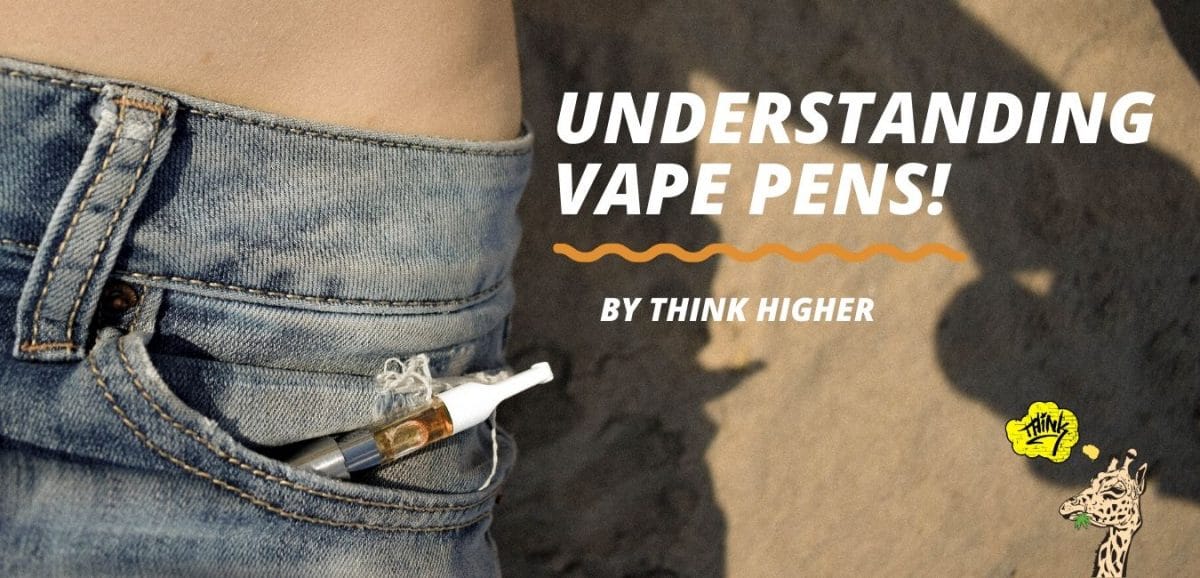Vaping and vape pens have been in practice for a long time. However, it is the legalization of recreational and medical cannabis regarding the vaping of THC, CBD and other cannabis oils that has revolutionized the art.
This article will cover several topics relating to vape pens. These include how a vape pen works, how vape batteries vary, the different cannabis oil concentrates for the different vape pens, in addition to covering the safety of vape pens.
What is a Vape Pen?
A vape pen is a slender, portable devices that are just beefier than a pen, that is sometimes referred to as a eCigarette. Normally designed with a refillable tank and a battery which can easily last a day of full use.
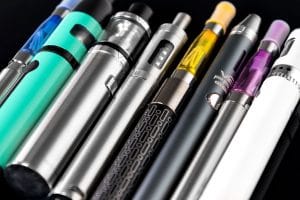 Vape pens are widely used with CBD and THC oil concentrate cartridges. The reliability and the ease of use has only helped increase its popularity.
Vape pens are widely used with CBD and THC oil concentrate cartridges. The reliability and the ease of use has only helped increase its popularity.
Vaping hits differently on the lungs depending on one’s experience. Experimenting with several vape pens makes it easy to differentiate brands and styles.
There are several things to consider when looking for a vape pen.
Anatomy of a Vape Pen
What is a vape pen made of? There are three major components
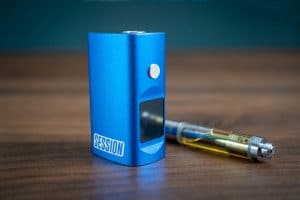
-
- Battery
- Atomizer
- Cannabis Oil / Liquid - These components can be broken down even more. Follow this in-depth breakdown regarding the three main components of vaporizer pens.
The Battery
The vape pen uses a rechargeable battery to power the atomizer up to 400 degrees within a few seconds. Most vape pens are powered by lithium-ion batteries. Lithium-Ion batteries are rechargeable, and reliable making them low-costing.
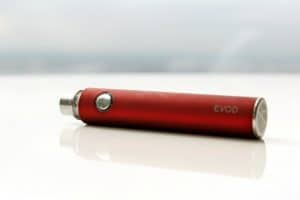
There are two common types of batteries, internal and external.
The internal battery is charged while connected to the vape pen. Most internal batteries have good protection circuitry.
The external battery, on the other hand, is removable, and in most cases, it is charged separately from the vape pen. External batteries allow the user to replace the battery if it were to malfunction. Therefore, ensuring reuse of the battery housing and atomizer.
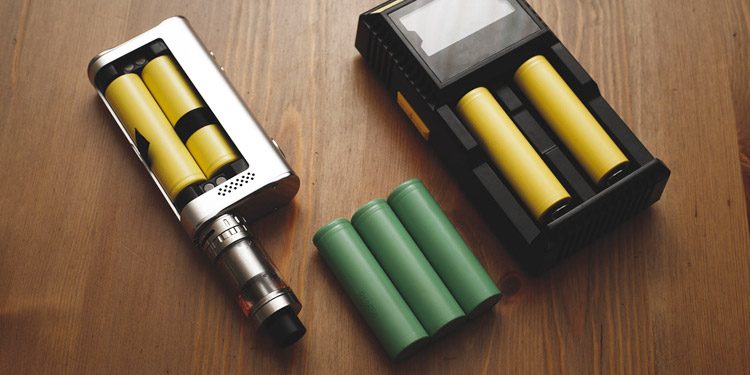
*Please note: Internal and External Batteries does not mean Automatic vs. Manual Batteries. Please refer below (link to this aspect below in blog)
Atomizer/Cartomizer/Vape Tank

The atomizer is the core of the vaporizer. Sophisticated atomizers which combine the cartridge (vape tank) with the atomizer into one component are known as cartomizers or clearomizers. Without the atomizer portion, there’s no way to turn the oil into vapor to be inhaled.
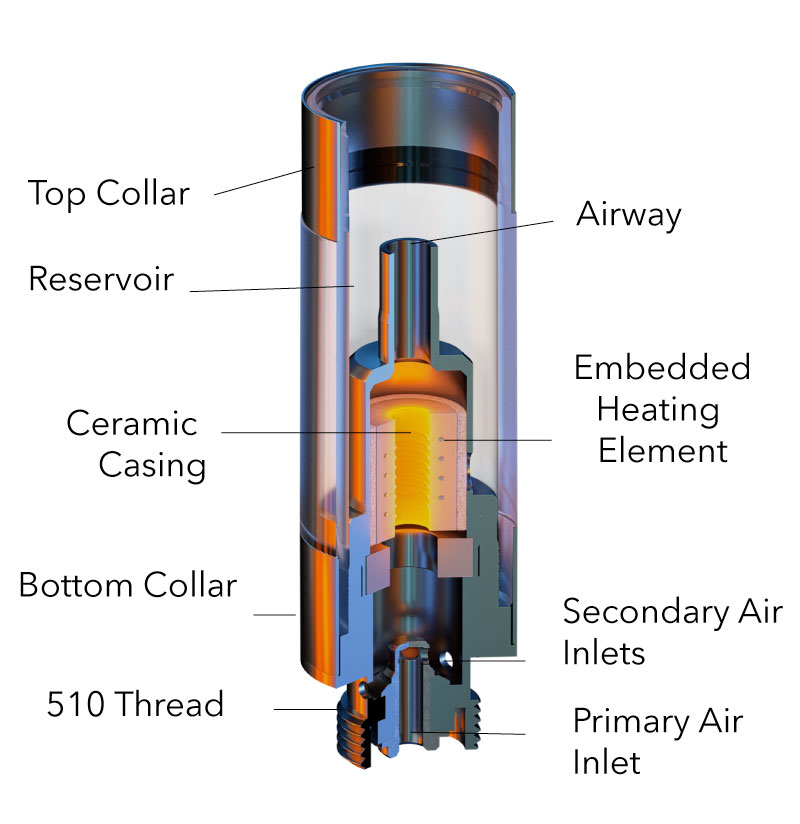
The atomizer itself can be broken down to key components: The coils, the wick and the vape tank. These three components make up the atomizer.
Coils
The atomizer consists of a heat resistant housing with tiny resistance coils. The coils are heated by the battery which in turn heats the liquid to vapor. Temperatures can easily reach 100-250 Celsius within the core of the coils. Most batteries are variable controlled, which allows the user to select a specific temp to best suit their wants.
The Wick / Intake Holes
The wick, sometimes referred to as intake holes, act as a pathway which directs the THC vape oil to contact with the coils. The atomizer wick can be made of several different materials and styles including but not limited to ceramic, cotton, silica wick and stainless-steel mesh. The wick can play a major role in the final taste / flavor, in addition to how often you must add cannabis vape oil.
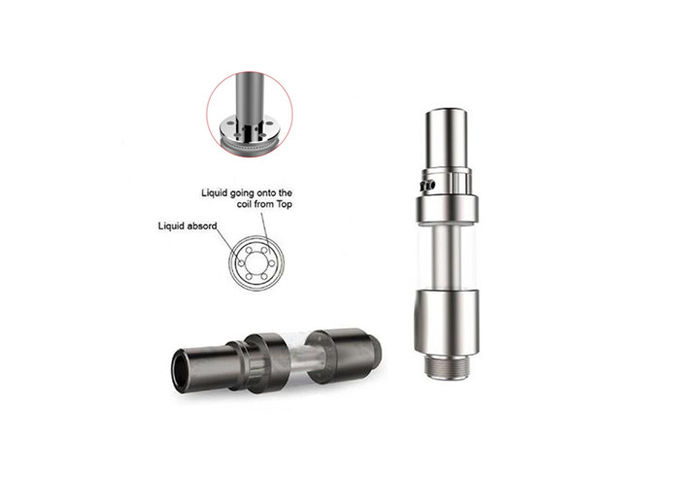
Vape Tank
The tank refers to a polycarbonate, glass or stainless part of the vape pen used for holding the cannabis oil. The tank combines with the atomizer to form a single unit. The vape tank holds the oil. It is imperative to have a tough and durable tank; A cheap brittle tank can leak causing the user to loss precious cannabis oil.
There are many kinds of vape tanks available. There are some key points that should be looked at, depending on an individual’s preference of flavor, cloud size and style of vaping.
Thread Size
Most common connections for cannabis vape pen cartridges and vape 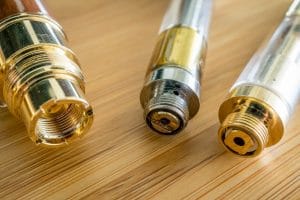 oil tanks are 510 threaded. The commonality in 510 threaded cartridges and tanks allow for universal use between different battery companies, styles and sizes. This, almost, universal standard allows the user to go from dispensary to dispensary and know a cartridge purchase at either place will work with their 510-compatible battery.
oil tanks are 510 threaded. The commonality in 510 threaded cartridges and tanks allow for universal use between different battery companies, styles and sizes. This, almost, universal standard allows the user to go from dispensary to dispensary and know a cartridge purchase at either place will work with their 510-compatible battery.
Hole Size
The hole size of the atomizer determines the amount of air flow when a user is drawing on the battery. The hole size has a direct impact on flavor and cloud size. The smaller the holes, the more flavor but small clouds, and oppositely with larger holes, less flavor and larger clouds.

The viscosity of the oil can additionally have negative impacts with regards to the hole size.
Thin oil, which one can compare to E-Juice tends to leak when used in larger holed atomizers. Whereas, thicker THC vape oils, such as Think Higher’s live resin terp cartridges, work best with a larger hole.
Sensors & Software
Sophisticated vape batteries and vape pens come with special software that helps them to detect when you breathe through them. These type of vape pens are referred to as Automatic.

Other vape batteries and vape pens require you to push the button to trigger the atomizer. This style of vape pen are referred to as Manual.

There are pro’s and con’s to both Manual and Automatic Vape pens and some can get intricate. Others allow for variable voltage and variable wattage, which are both big aspects in determine intensity of the hit.
Choose a Vape Pen with a long-lasting battery
Vape pen battery strength and life can vary widely between brands and styles. Internal and external factors depending on use can have a wide impact on battery performance. Faulty batteries also contribute to a fast discharge rate of the vape pen.
But how do you determine a battery which can last for hours?
900mah? 1100mah? 400mah? Voltage and ohm?

We understand how overwhelming buying a vape pen can be. There are many foreign symbols, unit numbers and abbreviations which can get confusing.
These ‘foreign symbols’ mAh, Voltage and ohm, however, do connect in a neat way.
What is mAh?
mAh is measure of a battery's total storage capacity. mAh stands for milliamperes per hour. Higher the mAh means higher the capacity.
A 1000 mAh can delivery one amp of power for one hour before it stops working.
Given the same of ohm and current, A 650mAh battery lasts between 4 and 6 hours while a 900mAh goes up to 10 hours. However, due to the factors explained later in this article, the 650mAh might last longer than the 900mAh battery.
The following are typical use times between charges when subjected to lower voltages (2.7-3.0). It is important to note that these periods are based on using the same:
-
-
-
- Ohms and coils
- Watts
- Same THC oil.
-
-
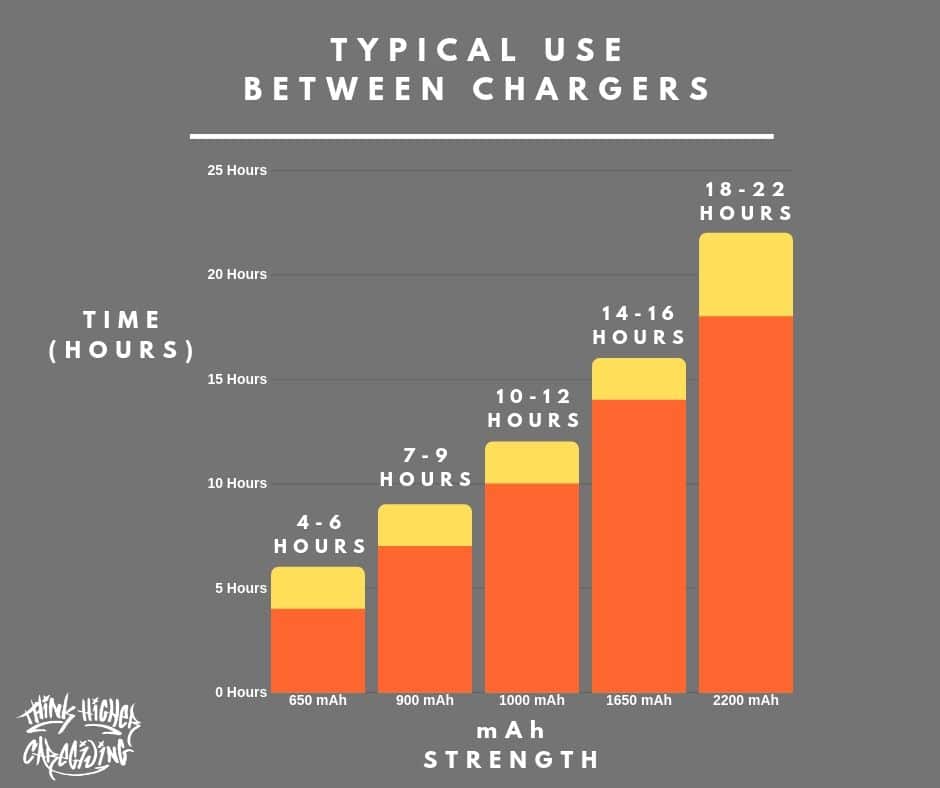
It is important to note that battery mAh is not the same as the battery voltage or power.
What is Battery Voltage?
Voltage is the amount of potential energy between two points in the circuit, where one points has a larger charge than the other. The difference in electrical charges between these two points is what is referred to as the Battery Voltage.
The voltage tells an individual the amount of current the battery can send to the coil.
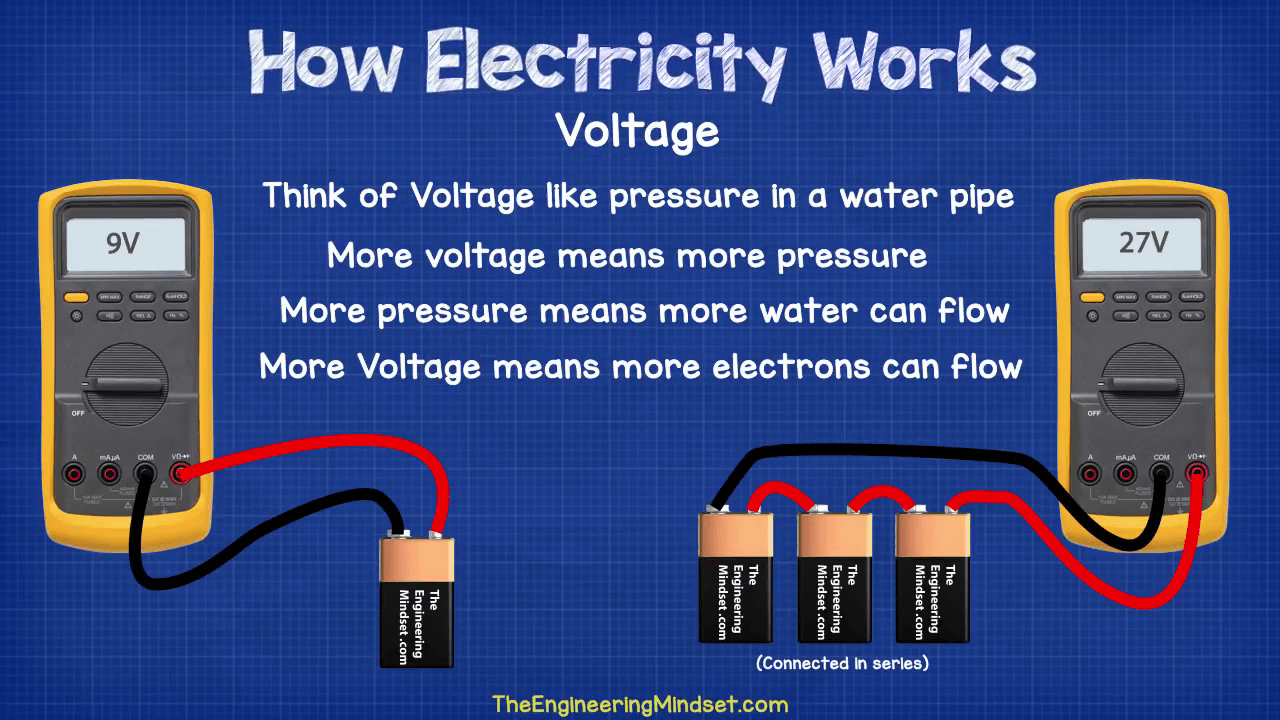
Most nonadjustable vape pen batteries have an output of 3.7 volts.
To connect Battery Voltage and Battery Capacity (mAH), we must first investigate ohm.
What is ohm?
Ohm is a unit of resistant. Ohm can start to make things quite confusing. Ohms can be explained by the simple equation of V=IR, which is referred to as ohms law.
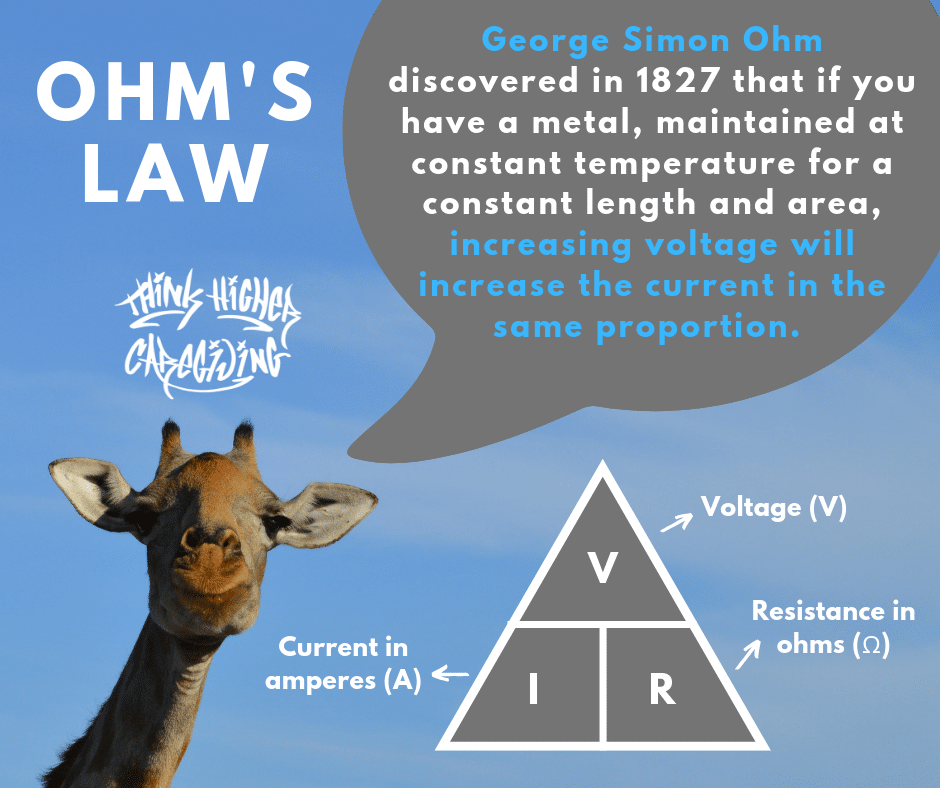
Where V=Voltage in volts I=Current in amps R=Resistant in ohms. This equation shows there is a direct relationship between these factors.
Given the same resistant (ohm) a higher voltage will produce more current (and watts) to the coils, resulting in more vapor. However due to the relationship of ohms law, the voltage can remain the same, and ohm can change resulting in a massively different hit by subjecting the coil to a different current.
CBD and THC oil has a direct affect on ohms. CBD and THC oil, on average, are thicker (more vicious). This thicker substance increases the current (ohms). Therefore, when comparing to nicotine e-juice, a user vaping cannabis oil will see their battery not last as long.
A normal reusable atomizer has an ohm rating between 2.4-2.8 and a range which is considered ‘standard’.
A normal disposable cartridge, however, can have an ohm rating between 1.6-2.2. These disposable cartridges are more common within the cannabis industry. CBD and THC concentrates are widely sold within these disposable cartridges and what Think Higher uses for all their cannabis cartridges.
How does all this connect?
Connecting all these pieces allows a user to easily determine the correct size of vape pen which best suits their needs.
Here is an illustration of how long a vape pen should last and how this situation can be altered.
Suppose the vape pen reads 900mAh, 3.7v, and 2.2ohm.
To get the number of amps, we can review V=IR. First you divide 3.7V/2.2ohm = 1.681 amps. 1.681 amps multiplied by 1000 is equivalent to 1681 milliamps. Now knowing the proper milliamps. We can enter our information into a vape battery calculator.
Entering our known mAh of our battery, 900, then our calculated milliamp consumption of the device. The program generates 0.374 hours or 22.48 minutes. Multiplying by 3600 (number of seconds in an hour), gives us 1,348.92 seconds of continue draw to discharge the battery completely.
By changing increasing the resistant (coil or viscosity of the oil) one can see that it has a direct relationship.
However, this is not possible since, during vaping, you take breaks in between.
Additionally, ohm can vary around 0.2 ohm in either direction and As the battery drains in a regulated mod, the battery voltage goes down. As a result, the mod must draw more current in order to maintain the set voltage or power.
These variances do not allow this simple equation to be exact science, but rather a good estimate.
Factors that affect how a battery lasts after a charge
Once V=IR is understood, a user can easily identify how it has a direct impact on battery life. In addition to ohms law there are additionally factors that can have affect how long a battery can last.
-
-
- How long you press the button
- The number of times you press the button
- Frequency of changing the watts or ohms (as discussed above)
- How you charge and maintain your device
- Individual battery sizes & specific makes.
- Viscosity of the oil & coil used in the vape tank (changes the resistant in current - ohms)
-
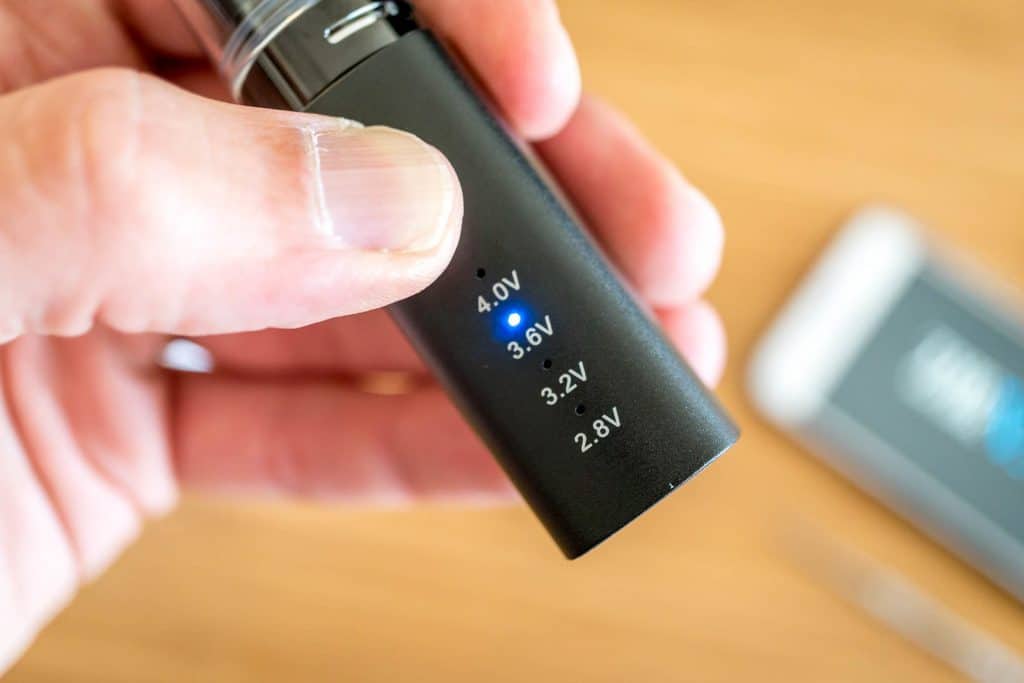
Additionally, internal factors such as the ability of the electrons to hold a charge alter the battery's lifespan. After some time, the battery will simply lose its ability to hold a charge, which requires an investment into a new one. Every battery is subjected to this lose of electrons.
Other Devices used in vaping
Due to advancement in technology, people are coming up with unique vaping devices. Devices range in price and each has a perk for a specific use. These include:
Pod Vapes
If you love trendy things, here is some news for you. The pod vapes. Sounds interesting, right? A pod vape refers to a two-piece device, with one part being the battery and the other being a refillable pod. The recent hit of Juul Pods has put this new style of vape on the map. Many reviews state that pod vapes perform better than most vape batteries and are just as reliable if not more so! But what makes the pod vapes the ultimate solution to vaping?
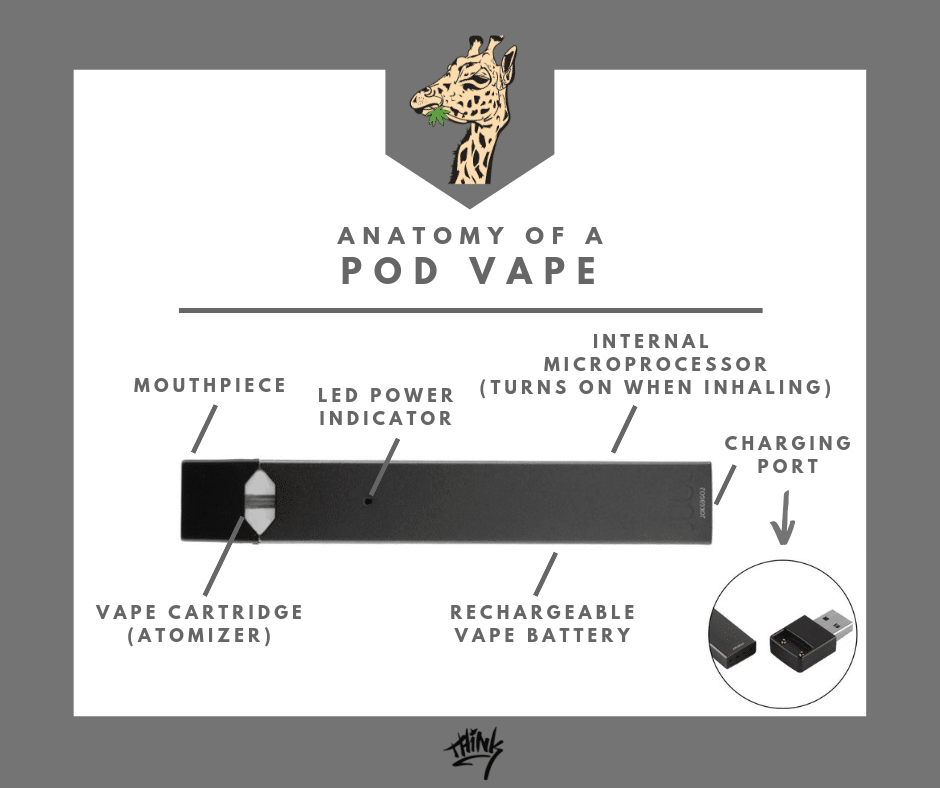
Pros
-
-
- They are easy to operate
- They are ideal for stealth vaping
- The refillable pods show how cost-efficient they are
- They are button and draw-activated
-
Cons
-
-
- There have been complaints about some pods leaking due to pod structure.
- Has a smaller battery and must be recharged often when using vicious oil.
-
Vape Mods - Mod Boxes
Mod boxes are not considered vape pens. More commonly referred to as mod vapes, they are classy, often pricey, and sleek.
These vaporizers come in two categories, beginner and experts depending on the number of features and output. More complex devices, such as batteries or mods with multiple user features, LED displays and different modes, such as temperature control, and high output devices, will use more power than a standard ecig battery.
Normally larger devices due to the needs of a larger battery than vape pens. Mod boxes come with a unique set of features and components.
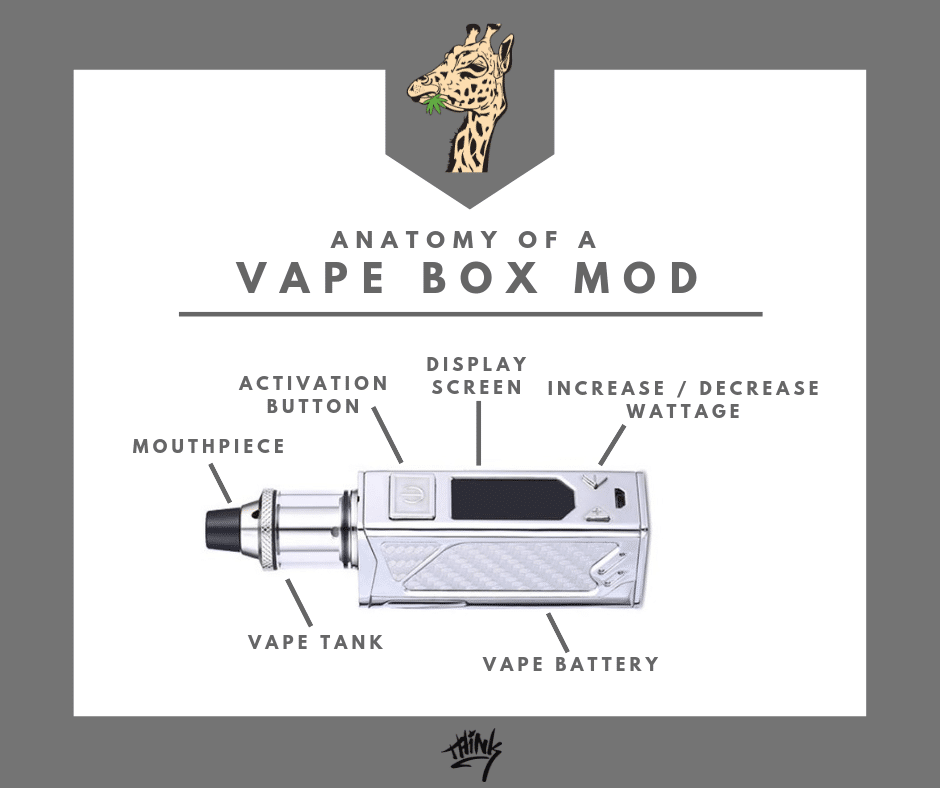
Pros
-
-
- They come in different categories to satisfy customer needs.
- Vape mods can produce thick vapor.
- Can easily replace most components of the vape mod, unlike vape pens.
-
Cons
-
-
- The high prices make them inaccessible to the ordinary vaper.
- Bulky and much heavier than vape pens.
-
Squonk Mods
Although not a large hit within the cannabis industry, but if you love standing above the vapers’ crowd, go for the squonk mod. This is a similar to most vape mods.
However, squonk mods are bottom-feeding atomizers that have a bottle contained inside. This bottle holds the oil in addition to allows the user to feed the atomizer with their THC or CBD oil! A squonk mod comes with a bottom-fed RDA (ReBuildable Atomizer) and squonk capablebox mod.
It also comes in two ways, a single battery or double battery. The latter is a popular option, which means you must cough extra coins to own it. However, it also means you don't have to keep charging the squonk kit every time.
Pros
-
-
- Saves time by not having to refill vape tank as often.
- You can modify the RDA.
-
Cons
-
-
- The sophistication of squonk mods makes it hard to use.
- Much higher in cost compared to any other vaping style.
- Can be very dangerous as it requires deep understanding of ohms law, voltage, wattage and electricity.
-
Difference types of concentrates for vapes
The vaping market is awash with numerous concentrates. You can choose a concentrate depending on its viscosity, the flavor or consistency. Some vape pens are designed for CBD and THC waxes and concentrates where other vape pens are designed for use with less vicious products such as THC distillate.
Here are some of the common concentrates in the market right now and how they perform with specific vape pens.
Shatter
Shatter? You read that right. This is a solid substance that almost resembles a glass shard. If you knock it using a dab tool, it breaks into smithereens, "shatters."
We cannot fail to mention that shatter leaves the vape pen the least messy like other concentrates. Shatter is easy to work with and use with vape pens requires a vape tank.
Cartridges rarely contain shatter as it takes a lot of unwanted foreign products (MCT, PG, VG) to decrease its viscosity.
Wax & Budder
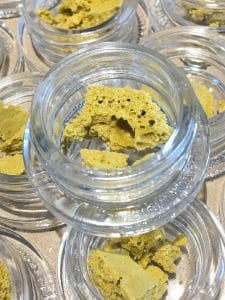
Wax is now a popular concentrate for vaping pens. There are two types of wax, the budder (also known as badder), and crumble/honeycomb wax.
The former is an almost viscous wax that you can stir very easily, while the latter refers to solid wax.
The crumble refers to concentrate in the form of crumbles, while the honeycomb refers to a vaping concentrate that looks like a honeycomb.
The wax has a wide array of different flavors but does require a vape tank.
Crystalline
Crystalline is a concentrate that is filtered to remove any plant matter, leaving pure content.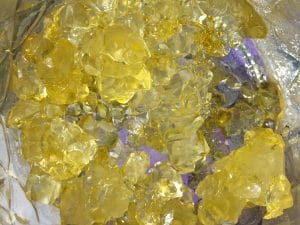
If you love 99%THC in vape form, go for the crystalline concentrate. In addition, the crystalline concentrate gives you a fresh feel of the concentrate.
The crystalline concentrate blends well with different vape pens. The crystalline solely works in higher quality vape mods. Due to the consistency, crystalline can easily clog normal cartridges.
Crystalline cannot be used for disposable pens, unless subjected to a high percent of cutting agent, in order to dilute the cannabis oil.
Distillate
The cannabis extracts (CBD and THC) are run through the purification
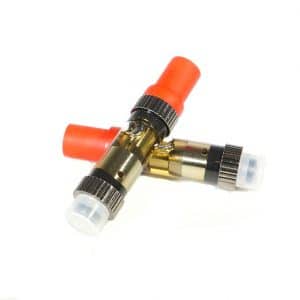
process. The final concentration achieves the color and viscosity of honey. The distillate is preferred for its viscosity since it makes a stable juice without any unwanted cuts.
THC distillate is one of the most common used cannabis concentrate used in disposable vape pens and cartridges. Distillate allows a great blank slate to allow the introduction of different terpene profiles and tastes.
Viscosity of oil used in vape pens
The viscosity of the cannabis oil is crucial as it affects the direct performance of vape pens. CBD or THC oil tends to be thicker than most other vaporizable oils and juices (ex: nicotine e-juice). A vape pen requires more energy the higher the viscosity of the oil.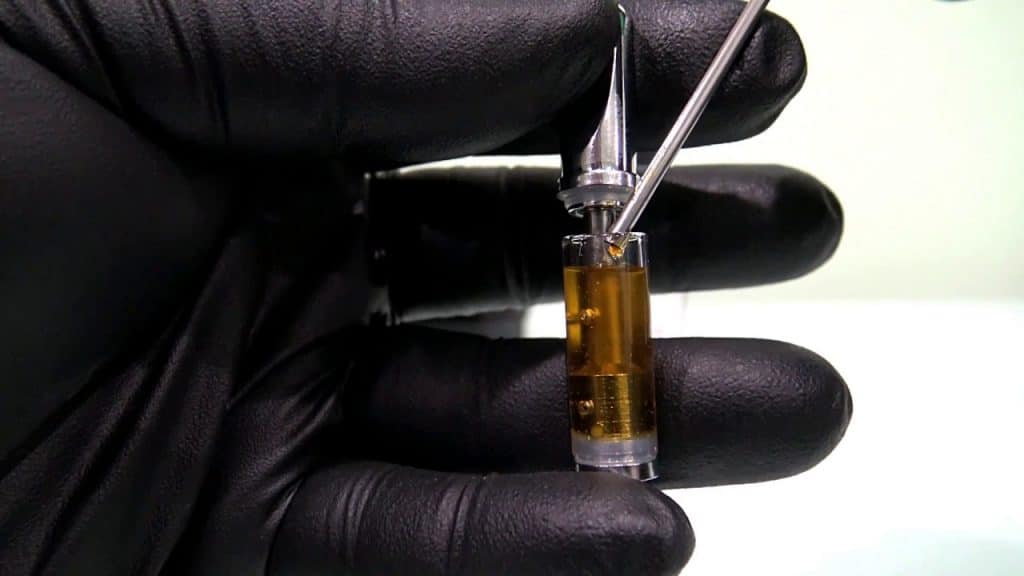
Sticky oil can clog the cartridge, which means the vape pen must use a lot of energy to first melt the clog before the product can vaporize. Whereas, less viscous oil floods the heating element, and does not require the excess power.
Safety of vape pens
The issue of safety regarding vape pens has been trending, thanks to claims that they could be disasters in disguise. After doing research, we came up with the following findings.
Some concentrates contain high levels of “thinning agent”
This might sound like news to some people, but some vaping pen cartridges contain high levels of thinning agents. These thinning agents are used to get the proper viscosity when mixed with the thicker THC oil.
These thinning agents are non-cannabis, and potentially toxic stuff. Polyethylene, Propylene glycol, Vegetable Glycol, multi-chain triglycerides and honey cut are the most common cuts.
Recent findings discovered that PEG-400 produced almost 4 times the amount of formaldehyde produced by PG, and 226 times that of either MCT or VG, both of which produced too small an amount to even reach quantitation thresholds.
Although long term studies must still be conduct, short term results are not positive. Indicating that some of the thinning agents being used today can be extremely harmful when vaped.
Some vaping pens and cartridges use plastic
Many might not believe this, but the outer part of vape pens can be made of plastic. It is even more worrying that some of these plastic vaping pens can contain bisphenol A (BPA) which is a pollutant. When the plastic is exposed to high temperatures, it starts to melt, exposing the person to health hazards.

Additionally, plastic wicks can be used instead of quality ceramic. Due to the location of the wick, it is subjected to high temperatures. These high temperatures can cause the plastic to leech into the oil, which then vaped. A plastic wick can be easily tasted by an experienced vaper.
Avoid plastic at all costs!
Conclusion
We can’t discuss everything about vaping pens. It is, therefore, prudent to carry out deep research before making a purchase of both the vape pen and cannabis oil to be used.
-
-
-
- Avoid using additives that are harmful to the body or environment.
- To avoid frustration, shoot for get a vape pen that has a battery which can remain charged for hours.
- Decided and determine the size and portability you desire.
- Ensure the proper style of vape pen or vape mod depending on the type of CBD or THC concentrate or cannabis oil you are hoping to vape.
-
-

